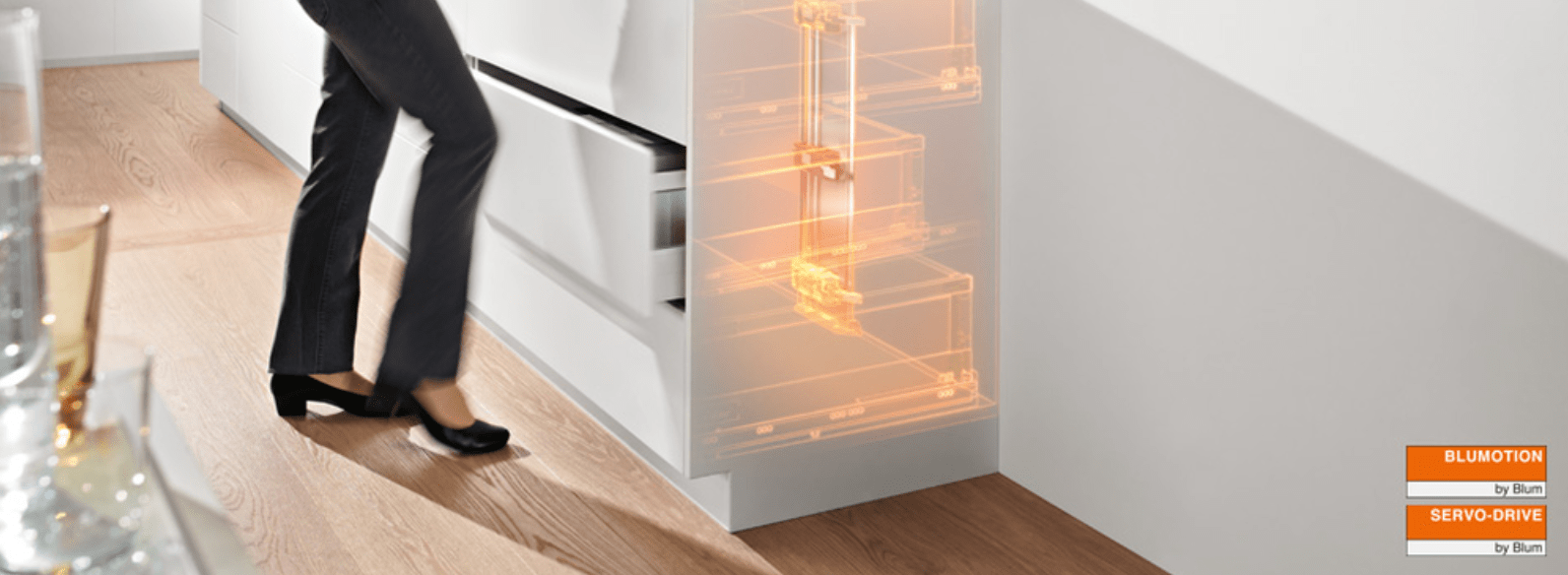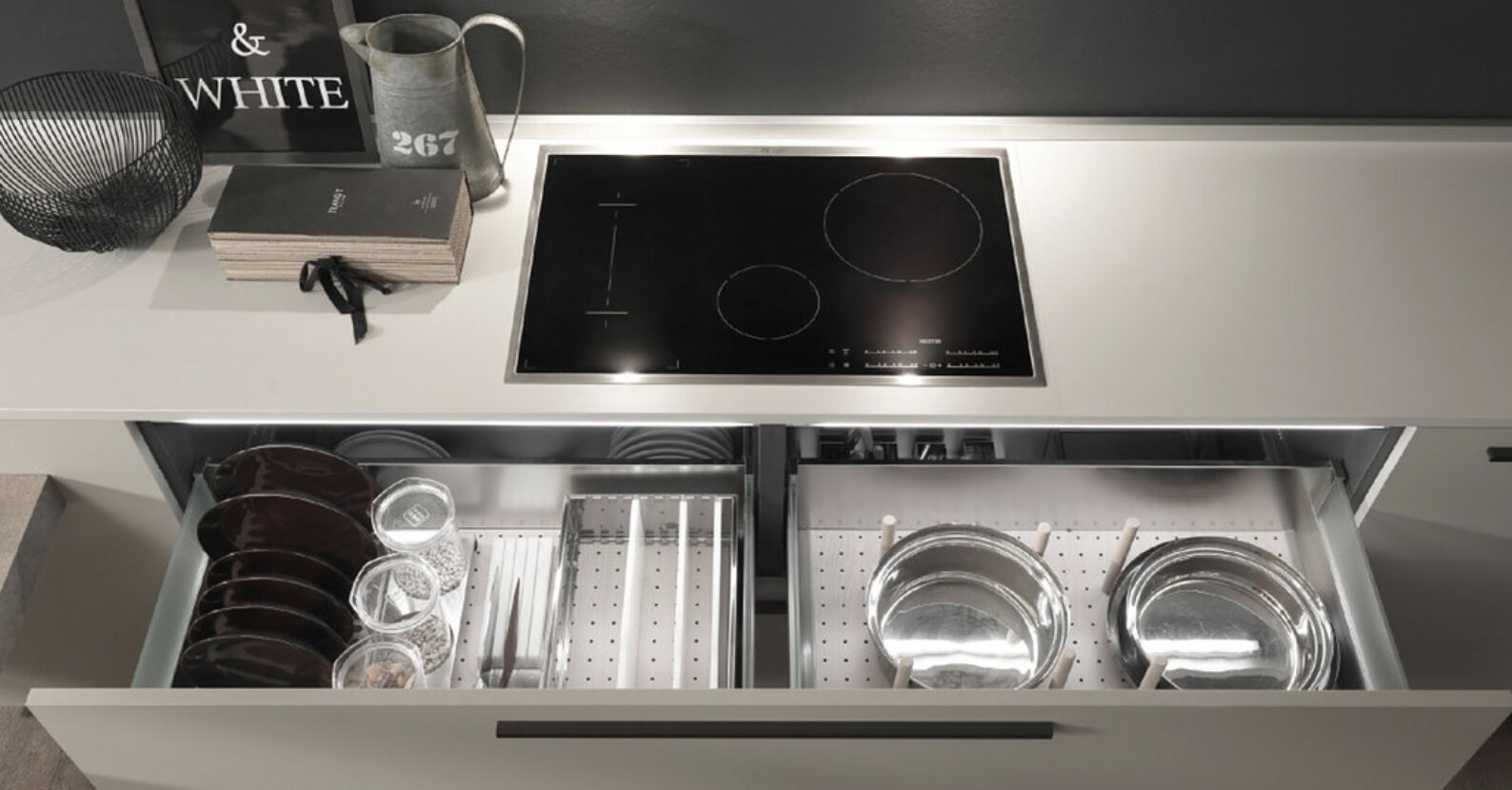Many customers are still hesitant when it comes to choosing the best storage system for the base units of their kitchen. There are many solutions, but we can basically divide them into two main categories: hinged door base units and base units with pull-out drawers/baskets. The choice can be influenced by several factors, ranging from functionality, aesthetics, or simply economics. Since the introduction of full-extension systems, the overall ergonomics of the "tool" kitchen have made great strides, and today the hinged door seems like a truly anachronistic solution. Sometimes, however, the customer doesn't want to hear any arguments and no one can get the idea of the door out of their head, because in their world it's always been done that way and maybe, burned by poor-quality drawers with partial extension slides, they prefer the security of two nice hinges, maybe even soft-closing. Another reason that could tip the balance in favor of doors is aesthetic, due to the continuity with the profile of the dishwasher. Normally, in fact (as you can see in the image above), the linearity of the drawers is interrupted by the appliance door which, except for rare cases (built-in drawer dishwashers), is a solid vertical panel. I realized I hadn't clarified the differences between partial and full extension. In fact, it's clear from the term itself: in the case of full extension, the drawer comes out completely beyond the body of the cabinet, allowing easy access to every corner of the container, while partial extension stops the slide before the outer edge of the kitchen, making it more difficult to pull out, for example, the pans at the back. We always suggest to our customers full-extension systems with Grass® or Blum® soft-close slides, which have silent movement, controlled soft return, and limited bulk. With these features, you'll never regret your choice, and just like with automatic car transmissions, once you've tried it, it's hard to go back.

We always suggest to our customers full-extension systems with Grass® or Blum® soft-close slides, which have silent movement, controlled soft return, and limited bulk. With these features, you'll never regret your choice, and just like with automatic car transmissions, once you've tried it, it's hard to go back. We can summarize the pros and cons of the two systems. HINGED DOOR Pros - Lower price - Greater usable internal volume of the cabinet - Suitable for particular solutions with front continuity Cons - Extremely inconvenient to reach the back parts of the storage compartment - Impossible to compartmentalize the space PULL-OUT DRAWERS Pros - Extremely convenient to use - Possibility to compartmentalize the space - Ready for various useful accessories - You don't have to bend or kneel to look for dishes - Possibility to motorize the mechanisms - Possibility to make much longer fronts compared to a door Cons For some years now, there have also been electrified solutions that allow you to open and close the drawer or basket simply by touching it with your knee. This solution is particularly convenient if your hands are full or to avoid leaving fingerprints on glossy surfaces such as lacquered or steel ones. Clearly, all systems also work in case of a power outage. Ultimately, if you're not really attached to a now remote tradition, in our opinion the choice is always the full-extension drawer. But pay close attention to what's underneath: the slides must be guaranteed and of quality, otherwise you might regret your choice.


